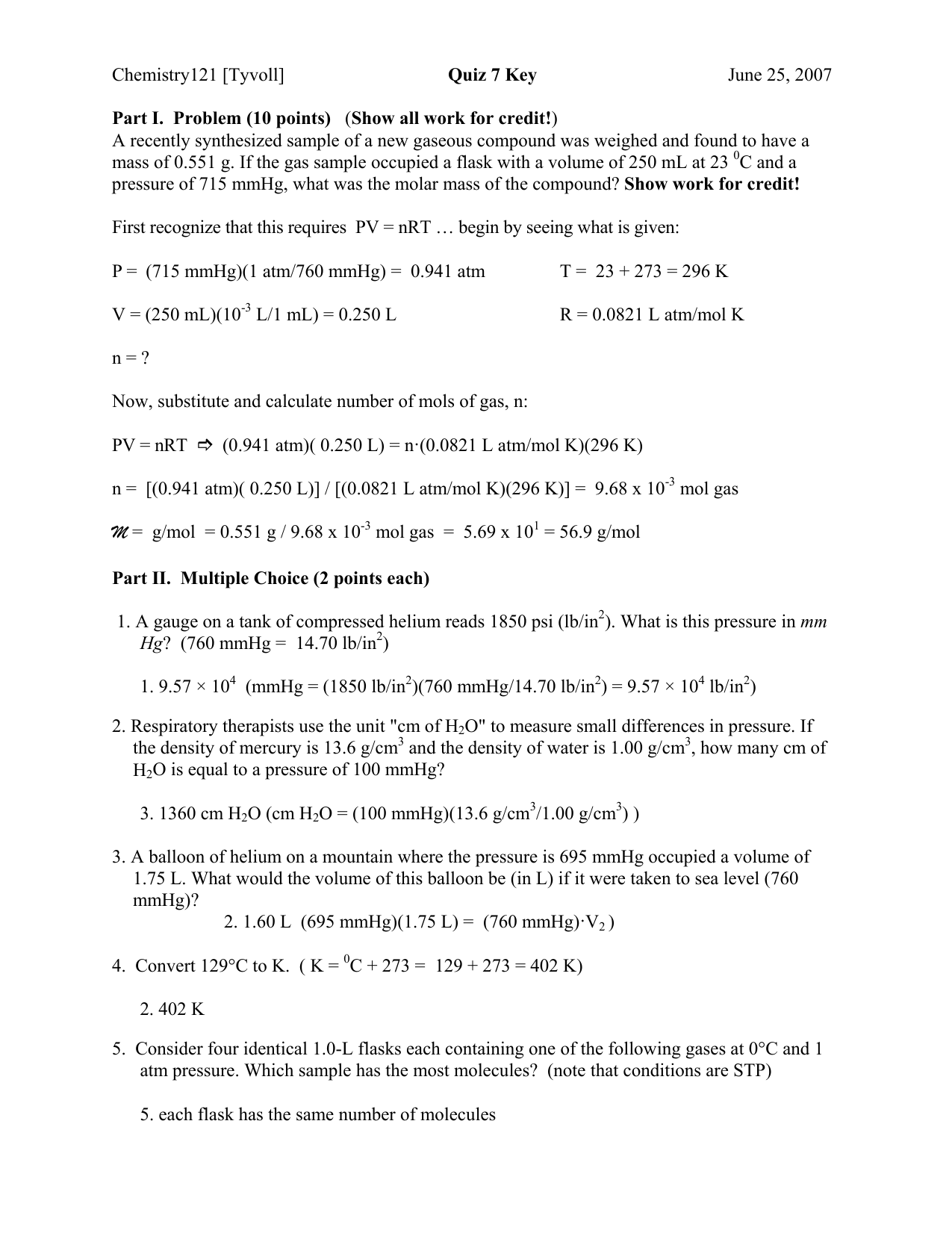

1mmHg 0.00132atm The pressure p in atmospheres (atm) is equal to the pressure p in millimeter mercury (0c) (mmHg) times 0.00132, that conversion formula: p (atm) p (mmHg) × 0. If you encounter any issues to convert Millibar to atm, this tool is the answer that gives you the exact conversion of units. 1 millimeter mercury (mmHg) is equal to 0.00132 atmospheres (atm). Converting mbar to Standard Atmosphere is easy, for you only have to select the units first and the value you want to convert. Type in your own numbers in the form to convert the units Quick conversion chart of mm Hg to atm. The formula to convert from atm to mmHg is: mmHg atm x 760.
715 mmhg to atm how to#
When you are converting pressure, you need a Millibar to Standard Atmosphere converter that is elaborate and still easy to use. Use this page to learn how to convert between millimeters mercury and atmospheres. Lets take a closer look at the conversion formula so that you can do these conversions yourself with a calculator or with an old-fashioned pencil and paper. helps in the conversion of different units of measurement like mbar to atm through multiplicative conversion factors. Be it buying grocery or cooking, units play a vital role in our daily life and hence their conversions. Measurement like pressure finds its use in a number of places right from education to industrial usage. Take a sample of gas at STP 1 atm and 273 K and double the temperature.ĭoubling the temperature, likewise doubled the pressure.Units of measurement use the International System of Units, better known as SI units, which provide a standard for measuring the physical properties of matter. 715 Millimeter Mercury (0☌) 0.94079 Atmospheres How to convert Millimeter Mercury (0☌) to Atmospheres 1 millimeter mercury (mmHg) is equal to 0.00132 atmospheres (atm).

This law holds true because temperature is a measure of the average kinetic energy of a substance when the kinetic energy of a gas increases, its particles collide with the container walls more rapidly and exert more pressure. Where #P_1# stands for the initial pressure of the gas, #T_1# stands for the initial temperature, #P_2# stands for the final pressure of the gas, and #T_2# stands for the final temperature.

The law has a simple mathematical form if the temperature is measured on an absolute scale, such as in kelvins. Pressure and temperature will both increase or decrease simultaneously as long as the volume is held constant. Simplified, this means that if you increase the temperature of a gas, the pressure rises proportionally. 1 atm - 760 mmHg x - 715 mmHgx 0.940 atm jhonny04 jhonny04 Qumica Universidad contestada Un barometro indica 715 mm de hg calcular la precion. In other words, Gay-Lussac's Law states that the pressure of a fixed amount of gas at fixed volume is directly proportional to its temperature in kelvins. Task: Convert 975 mmHg to atmospheres (show work) Formula: mmHg ÷ 760 atm Calculations: 975 mmHg ÷ 760 1.28289474 atm Result: 975 mmHg is equal to 1.28289474 atm. What volume does 0.556 mol of gas occupy at a pressure of 715 mmHg and a temperature of 58 C PVnRT convert o C to K, mmHg to atm, R 0.082 Latm K mol 15. Gay-Lussac’s Law is an ideal gas law where at constant volume, the pressure of an ideal gas is directly proportional to its absolute temperature. #V_2 = ? color(white)(mml)n_2 = "0.500 mol + 0.250 mol = 0.750 mol"# 1 psi 51.715 torr (mmHg) psi to torr Atm (Atmospheric Pressure) Conversion: An atmosphere (atm) equals to the air pressure at the sea level at a temperature of 15 Celsius. If we add 0.250 mol of gas at the same pressure and temperature, what is the final total volume of the gas? Thus, its molar volume at STP is 22.71 LĪ 6.00 L sample at 25.0 ☌ and 2.00 atm contains 0.500 mol of gas. One mole of an ideal gas occupies 22.71 L at STP. #V/n = k#, where #k# is a proportionality constant.Įqual volumes of hydrogen, oxygen, or carbon dioxide contain the same number of molecules. Here is a repeat from the 'Four Variables' file:There are three different units of pressure used in chemistry. Solution: multiply the atm value by 760.0 mmHg / atm. #V ∝ n#, where #V# is the volume, and #n# is the number of moles. equals 760.0 mm Hg, so there will be a multiplication or division based on the direction of the change. It does not depend on the sizes or the masses of the molecules.

The volume increases as the number of moles increases. Another statement is, "Volume is directly proportional to the number of moles."


 0 kommentar(er)
0 kommentar(er)
